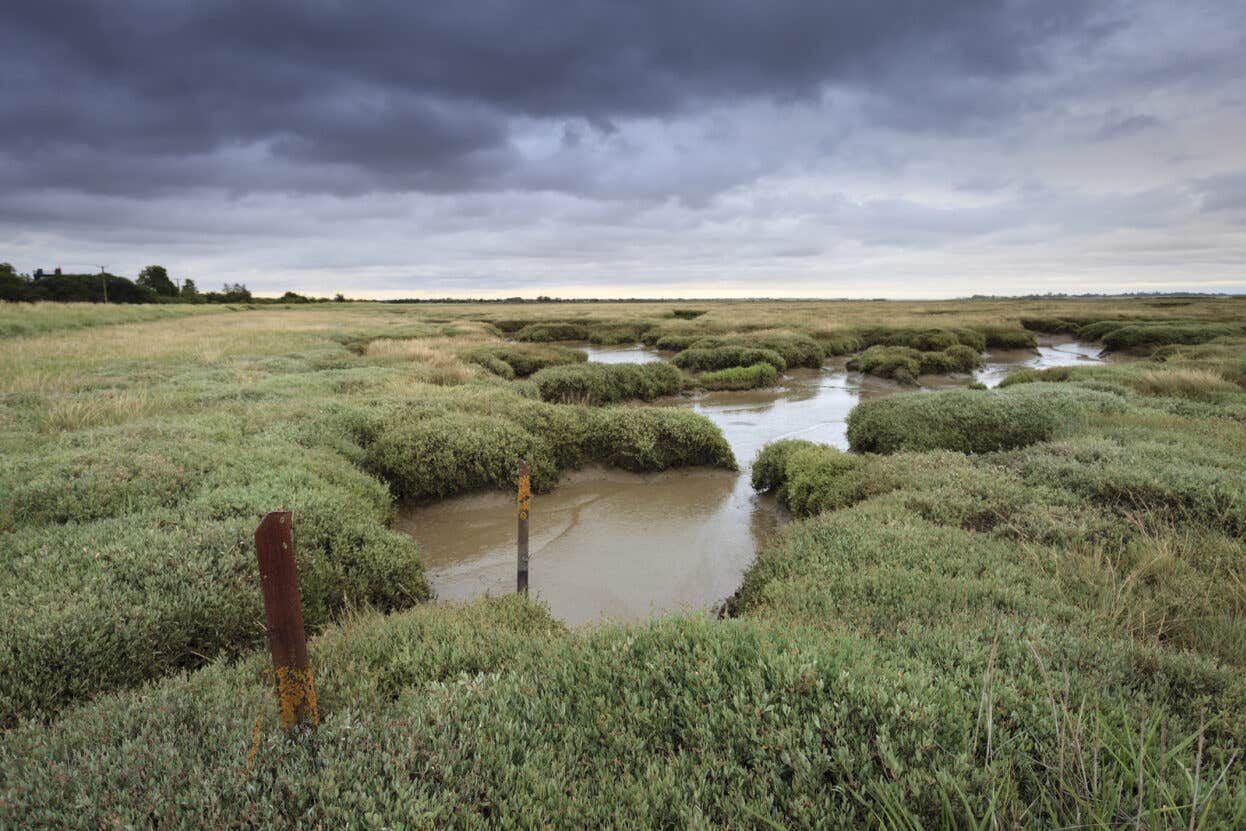Section of sea wall removed to help protect saltmarsh habitat
The work at Northey Island in Essex has opened up more space for seawater to come through and help slow a phenomenon called coastal squeeze.

Your support helps us to tell the story
From reproductive rights to climate change to Big Tech, The Independent is on the ground when the story is developing. Whether it's investigating the financials of Elon Musk's pro-Trump PAC or producing our latest documentary, 'The A Word', which shines a light on the American women fighting for reproductive rights, we know how important it is to parse out the facts from the messaging.
At such a critical moment in US history, we need reporters on the ground. Your donation allows us to keep sending journalists to speak to both sides of the story.
The Independent is trusted by Americans across the entire political spectrum. And unlike many other quality news outlets, we choose not to lock Americans out of our reporting and analysis with paywalls. We believe quality journalism should be available to everyone, paid for by those who can afford it.
Your support makes all the difference.Conservationists have taken down a section of sea wall to help protect saltmarsh that is being eroded as a result of rising sea levels and could disappear in 100 years if nothing is done.
Saltmarsh locks up carbon and is a habitat for wildfowl and plant life.
Opening up more space for seawater to come through at Northey Island in Essex helps slow a phenomenon called coastal squeeze, where a habitat caught between man-made sea defences and rising seas is squeezed out.
The National Trust, which manages the site in the Blackwater Estuary, hopes the work will reduce the loss of habitat.
Daniel Leggett, senior coastal project manager for the National Trust, said: “Under sea-level rise and climate change at the location we’re talking about, if we do nothing, then in 100 years’ time all the saltmarsh is gone.
“Saltmarsh has all sorts of value.
“It sequesters carbon, it’s important for fish nursery areas, birds of course use it and the vegetation and the landscape itself.”
If you’re within an estuarine location, which this is, if you keep all the sea walls where they are and keep building them higher, all you’re doing is funnelling the tidal energy into an ever-decreasing area. You get more wave energy, more tidal energy and therefore loss of the habitat
He said that around 250 metres of sea wall was removed earlier this year, allowing high tides through to deposit seeds and sediment and create new saltmarsh.
Explaining why some sea wall was removed in response to rising sea levels, Mr Leggett said: “If you’re within an estuarine location, which this is, if you keep all the sea walls where they are and keep building them higher, all you’re doing is funnelling the tidal energy into an ever-decreasing area.
“It’s getting faster and faster, getting deeper, and if it’s deeper it will also have bigger waves.
“You get more wave energy, more tidal energy and therefore loss of the habitat.
“This is a process that’s commonly referred to as coastal squeeze.
By taking the sea wall down, what you’re doing is allowing what nature would do, which as sea levels rise it would spread sideways into the floodplain and that slows things down and reduces energy. You’re now giving more space for nature to operate within
“You’ve got the man-made defence, the rising sea level and the habitat in between is getting squeezed out of existence.
“By taking the sea wall down, what you’re doing is allowing what nature would do, which as sea levels rise it would spread sideways into the floodplain and that slows things down and reduces energy.
“Of course you get deposition of sediment and so on associated with it.
“This is effectively reversing the process whereby you’ve squeezed the system.
“You’re now giving more space for nature to operate within.”
Mr Leggett said the first realignment project at Northey Island, in 1991, was the “first one in the country”.
Further work would happen over the next three years, he added, including placing dredged sediment in areas that had been eroded.
An island designed to remain above tide levels for the next 100 years would also be built for birds to nest and breed.
Overhead power lines were removed during the project, with cables routed underground instead, in a boost for birds.
Record numbers of dunlins and dark-bellied brent geese were recorded afterwards.
The new area of saltmarsh will also offer a new habitat for plants including the nationally scarce shrubby sea-blite, golden samphire and bladder wrack.